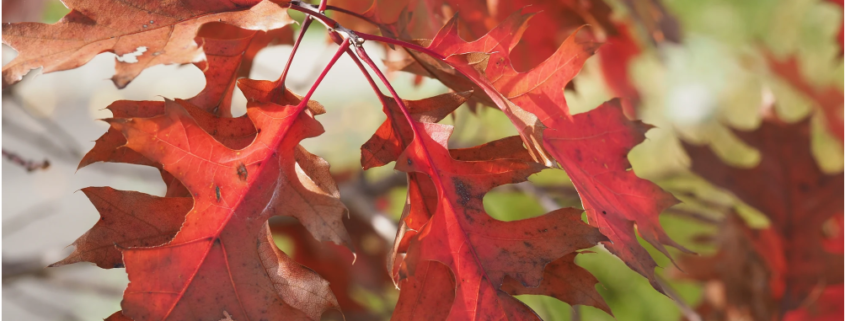Fall Cleanup in Two Easy Steps
Article and photo by Plant NOVA Natives
Here is an executive summary of eco-friendly yard maintenance recommendations for fall.
- Watch the pretty leaves flutter down from above.
- Do as little as possible to disturb those leaves or the flower stalks.
In the days when gardening meant growing food for the table, cleaning out plant debris before winter was a routine practice to reduce the spread of diseases that affect vegetables. That routine carried over when suburbanites switched their yards to ornamental plants and turf grass, with the unfortunate consequence that we deprived our non-human neighbors of the shelter and food they need to survive. The tide is turning, though, as people are realizing that attractive gardens that support the ecosystem do better when their caretakers go easy on the autumn chores.
Some birds and nocturnal mammals are able to dig for grubs in a lawn, but you may have noticed that most friendly critters such as box turtles, frogs, and katydids do not spend a lot of time frolicking on your turf grass. It would leave them much too exposed, not to mention starving. Layers of leaves from native trees and shrubs, by contrast, provide a smorgasbord for them. Some of their meals consist of the caterpillars and other insects that feed on the leaves of native trees in spring and summer until they float down to the ground in the fall. Those that escape predation turn into adults the next spring and start the cycle over. Other insects such as fireflies spend their entire lives in the leaf litter, coming out briefly to find mates. All this assumes that their homes are not chopped up or raked up to be sent off to mulch factories.
Similarly, dead stalks provide shelter for many little critters, including certain species of native bees that burrow into the ends of broken stalks to lay their eggs. Plants left intact enliven our yards all winter with their interesting seed heads and waving stems, made even more lively as the songbirds perch on the stalks and scrabble in the leaves for the seeds of flowers and grasses.
As the plants emerge again in the spring, they have no trouble pushing past the dead leaves, which act as a natural mulch until they gradually decompose and feed the soil. Many of the dead flower stalks will have fallen down by spring, and those remaining are quickly hidden from sight by the growing plants. If those plants are native to our ecosystem, they continue to provide benefits the rest of the year by nourishing the caterpillars and providing nectar and pollen for the pollinators. Some of the thicker leaves such as oaks may smother turf grass under the trees, but that is just as well, since mowing around trees risks injuries to their bark, and walking under them compacts the soil and stresses the roots. Trees do best when their leaves are left in place out to the drip line. But if that isn’t possible, try to move these leaves intact into other beds. Mulching fallen leaves with the mower blade is better than sending them off in a truck or dumping smothering piles in the woods, but it may chop up the insect larvae and eggs.
Simple adjustments such as these to our landscaping practices will greatly improve the prospects of our local ecosystem. Other important steps to take include adding native plants, removing invasive non-native plants, minimizing the use of outdoor lighting, and eliminating mosquito spraying with its lethal consequences to the living world. Learn more on the Plant NOVA Natives website.


